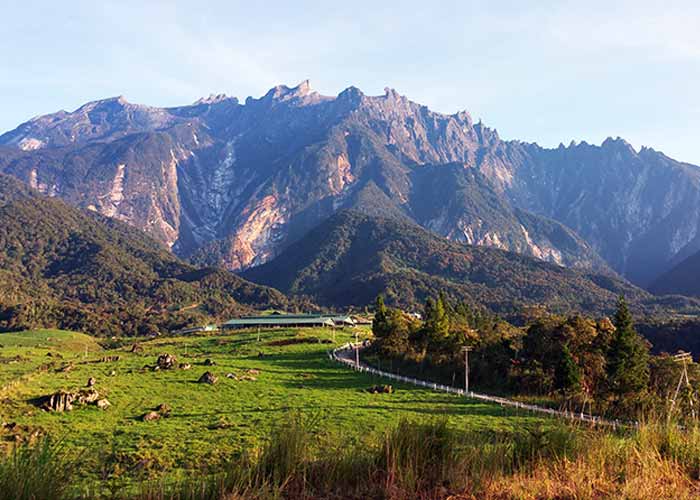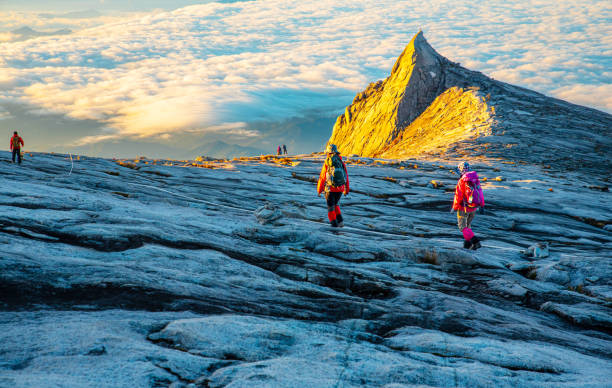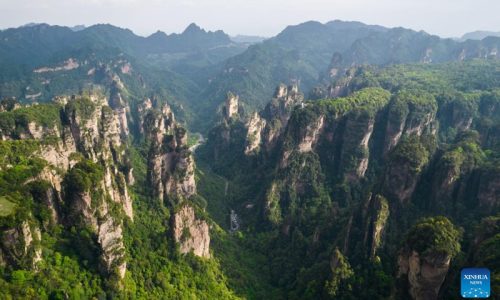Discover the Majestic Mount Kinabalu in Sabah, Malaysia: An Unforgettable Natural and Cultural Icon
Mount Kinabalu in Sabah, Malaysia, stands as a breathtaking symbol of natural beauty and cultural heritage. As the highest peak in Southeast Asia, this mountain attracts thousands of adventurers and nature lovers every year who seek to experience its awe-inspiring landscapes, rich biodiversity, and spiritual significance. Nestled within Kinabalu Park, a UNESCO World Heritage Site, Mount Kinabalu offers a unique blend of ecological diversity and cultural stories that have been passed down through generations. Whether you’re a seasoned climber or a curious traveler, exploring Mount Kinabalu in Sabah, Malaysia, provides an unforgettable journey into the heart of nature’s grandeur and local traditions. Planning your trip to this iconic mountain involves understanding its routes, weather conditions, and cultural importance, ensuring a safe and meaningful experience. Discover why Mount Kinabalu in Sabah, Malaysia, remains a must-visit destination for those eager to connect with nature and heritage in one of the world’s most remarkable settings.

Discover Mount Kinabalu: The Iconic Natural and Cultural Landmark of Sabah in Malaysia
Mount Kinabalu stands as Malaysia’s highest peak and a symbol of Sabah’s rich natural heritage. Rising over 4,000 meters, this majestic mountain offers more than just a challenging climb—it embodies the cultural identity and ecological diversity of Sabah. Every year, thousands of adventurers and nature enthusiasts travel to this renowned destination to experience its breathtaking scenery and spiritual significance.
With its stunning vistas, unparalleled biodiversity, and cultural importance, Mount Kinabalu is one of Malaysia’s top tourist attractions. Preserving this natural treasure is vital for maintaining regional ecological balance and cultural legacy. The mountain serves as a reminder of the need to respect and protect Sabah’s unique environment and traditions.
Beyond its natural beauty, Mount Kinabalu plays a crucial role in local education and cultural promotion. Indigenous stories and legends about the mountain highlight its significance in Sabah’s history and folklore. Consequently, Mount Kinabalu is not only a popular destination but also a cultural icon that warrants ongoing conservation efforts.
The Historic First Ascent and Adventurous Expeditions on Mount Kinabalu
The first recorded ascent of Mount Kinabalu was undertaken in the late 19th century by European explorers and mountaineers. These pioneering journeys faced numerous challenges, including rugged terrain and unpredictable weather, yet they marked a milestone in Malaysia’s mountaineering history. Today, various expeditions continue to push boundaries, with climbers aiming for new records and exploring different routes.
These historic climbs symbolize human resilience and curiosity, showcasing our desire to conquer nature’s formidable obstacles. The stories of early explorers inspire modern adventurers to seek their own memorable experiences on the mountain. Each ascent adds a new chapter to the mountain’s storied past, inspiring future generations of explorers and nature lovers.
Modern routes vary in difficulty, offering options for beginners and seasoned climbers alike. Technological advances have improved safety and accessibility, allowing more visitors to reach the summit with confidence. These developments ensure that Mount Kinabalu remains a premier destination for adventure and exploration.
Flora and Fauna: The Rich Biodiversity of Mount Kinabalu
Mount Kinabalu is recognized as one of the world’s most biodiverse regions, hosting thousands of plant and animal species. Its varied elevations and climate zones create ideal habitats for rare and endemic species. Unique flora such as the Rafflesia flower and numerous orchids thrive here, many of which are found nowhere else on Earth.
Wildlife like orangutans, clouded leopards, and numerous bird species inhabit the mountain’s forests. This extraordinary biodiversity underscores the importance of conservation efforts to protect fragile ecosystems from threats such as deforestation and climate change. Scientific research continues to reveal new species, emphasizing the mountain’s ecological significance.
Protecting this biodiversity requires coordinated efforts involving local communities, scientists, and policymakers. Educating visitors about responsible tourism and conservation practices is essential to sustain the mountain’s natural heritage for future generations. Every individual can contribute to safeguarding this ecological treasure by respecting the environment during their visit.
Mount Kinabalu’s Role in Global Conservation and UNESCO World Heritage Status
Designated as a UNESCO World Heritage Site, Mount Kinabalu plays a vital role in global efforts to conserve biodiversity and cultural heritage. This recognition emphasizes the mountain’s ecological and cultural value, encouraging sustainable management and international cooperation. It also attracts eco-conscious travelers who support conservation initiatives.
Conservation programs focus on protecting endemic species and maintaining the integrity of the mountain’s ecosystems. Managing tourism sustainably is key to balancing economic benefits with environmental preservation. Education campaigns raise awareness among visitors about their role in conserving this natural wonder.
Mount Kinabalu exemplifies the harmony between ecological preservation and responsible tourism. Its UNESCO status helps ensure that future generations can enjoy its beauty and ecological richness, reinforcing Sabah’s reputation as a global conservation leader.
Guided Climbing Routes: From Easy Trails to Challenging Ascents
Multiple routes lead climbers to the summit of Mount Kinabalu, each offering unique experiences. The Timpohon Trail is the most popular, suitable for beginners and families, featuring well-maintained paths and basic facilities. For more experienced hikers, the Mesilau Trail presents a more challenging ascent with stunning scenery and fewer crowds.
Advanced climbers may opt for technical routes that require specialized equipment and guidance. Regardless of the chosen path, safety is paramount—guides and porters are available to assist and ensure a secure journey. The diverse routes provide opportunities for all levels of adventurers to enjoy the mountain’s grandeur.
Preparation is essential: proper gear, physical fitness, and acclimatization help ensure a successful climb. Planning ahead and consulting with experienced guides can make the experience more enjoyable and safe. Each route offers spectacular views and memorable moments that make the effort worthwhile.
The Best Time to Visit Mount Kinabalu: Weather and Seasons
The climate of Mount Kinabalu varies with altitude, from warm lowland areas to cold, snowy peaks. The ideal time for trekking is during the dry season, typically between December and February, and June to August, when weather conditions are most favorable. During these months, visitors can enjoy clear skies and better visibility for sightseeing and photography.
Rainy seasons, from March to May and September to November, can bring heavy rainfall, making trails slippery and increasing risks. Planning your trip around the weather forecast helps ensure a safer and more enjoyable experience. It’s also advisable to book permits and accommodations well in advance during peak seasons.
In winter months, snow and ice may appear at higher elevations, requiring specialized gear and experience. Always check current weather conditions before your trip to prepare accordingly. Proper planning guarantees a memorable and safe adventure on Mount Kinabalu.
Local Legends and Cultural Significance of Mount Kinabalu
In Sabah’s indigenous cultures, Mount Kinabalu holds sacred status, with legends and stories passed down through generations. Many local communities believe the mountain is the dwelling of spirits and ancestors, and they hold annual ceremonies to honor these beliefs. These stories reflect deep respect and spiritual connection to nature.
Some legends describe the mountain as a guardian of the land, protecting the people from harm, while others tell of heroic figures who ascended the peak to seek blessings. These narratives reinforce the mountain’s importance as a cultural and spiritual symbol in Sabah’s heritage.
Understanding and respecting these cultural stories enriches visitors’ experience and promotes responsible tourism. Participating in local customs and learning about traditional beliefs fosters appreciation for Sabah’s rich cultural diversity and natural wonders.
Planning Your Trip: Tips and Recommendations for Visiting Mount Kinabalu
Effective planning is key to a successful journey to Mount Kinabalu. Start by choosing the right season, securing necessary permits, and booking guided tours or accommodations early. Prepare suitable clothing, sturdy footwear, and essential safety gear for the climb.
Acclimatize properly by spending a day or two at lower elevations before ascending. Engage experienced guides who can provide valuable insights and ensure safety throughout the trek. Familiarize yourself with the trail conditions and weather forecasts to avoid surprises.
After reaching the summit, take time to enjoy the panoramic views and capture memorable photos. Respect the environment by disposing of waste responsibly and following park regulations. With careful preparation, your adventure on Mount Kinabalu will be safe, enjoyable, and unforgettable.

Frequently Asked Questions about Mount Kinabalu
- What is Mount Kinabalu?
- Mount Kinabalu is the highest peak in Malaysia, standing over 4,000 meters tall. It is a UNESCO World Heritage Site and a symbol of Sabah’s rich natural and cultural heritage. The mountain is renowned for its stunning scenery, diverse biodiversity, and spiritual significance to local indigenous communities.
- Why is Mount Kinabalu considered a significant natural landmark?
- Mount Kinabalu is a vital ecological treasure, hosting thousands of plant and animal species, many of which are endemic. Its varied climate zones and elevations create unique habitats, making it one of the world’s most biodiverse regions. Its natural beauty and ecological importance make it a key conservation priority.
- What is the history of the first ascent of Mount Kinabalu?
- The first recorded ascent was in the late 19th century by European explorers. Despite challenging terrain and unpredictable weather, their pioneering efforts marked a milestone in Malaysia’s mountaineering history. Today, climbers continue to explore new routes and push their limits on this iconic mountain.
- What are the main biodiversity features of Mount Kinabalu?
- The mountain is home to rare orchids, the Rafflesia flower, orangutans, clouded leopards, and numerous bird species. Its diverse ecosystems support many endemic species, emphasizing the importance of ongoing conservation efforts to protect this rich biodiversity.
- How does Mount Kinabalu contribute to global conservation efforts?
- As a UNESCO World Heritage Site, Mount Kinabalu plays a crucial role in preserving biodiversity and cultural heritage. Conservation programs focus on endemic species and ecosystem protection, while sustainable tourism helps balance ecological preservation with economic benefits.
- What are the popular routes for climbing Mount Kinabalu?
- The Timpohon Trail is the most popular, suitable for beginners, with well-maintained paths. The Mesilau Trail offers a more challenging experience with scenic views. Advanced climbers can choose technical routes requiring specialized equipment. Guides and porters are available for safety and assistance.
- When is the best time to visit Mount Kinabalu?
- The ideal months are December to February and June to August, during the dry season, when weather conditions are most favorable. Rainy seasons from March to May and September to November can bring heavy rain and slippery trails. Always check weather forecasts before planning your trip.
- What cultural significance does Mount Kinabalu hold?
- Local indigenous communities regard Mount Kinabalu as sacred, with legends about spirits and ancestors residing on the mountain. These stories reflect deep spiritual connections and cultural heritage, which visitors should respect and learn about during their visit.
- How should I prepare for a climb on Mount Kinabalu?
- Preparation includes choosing the right season, booking permits and guides early, packing suitable clothing and gear, and acclimatizing at lower elevations. Proper planning ensures safety and enhances the overall experience.
- Are there any safety tips for climbing Mount Kinabalu?
- Always use a guide, wear appropriate footwear, and carry necessary safety equipment. Acclimate gradually, stay hydrated, and follow park regulations. Be aware of weather conditions and avoid climbing during storms or heavy rain.
- What should I bring for the climb?
- Bring comfortable hiking shoes, warm clothing for higher elevations, rain gear, water, snacks, a camera, and a flashlight. Packing light but essential items is recommended for a safe and enjoyable trek.
- Can I climb Mount Kinabalu if I am a beginner?
- Yes, the Timpohon Trail is suitable for beginners and families. However, proper preparation, acclimatization, and guidance are essential to ensure safety and enjoyment during the climb.
- What is the significance of Mount Kinabalu for local communities?
- It holds spiritual and cultural importance, with legends and traditions passed down through generations. The mountain is also a source of livelihood through tourism and conservation efforts, fostering a sense of pride and identity among indigenous groups.
- How does tourism impact Mount Kinabalu?
- Tourism provides economic benefits and promotes conservation awareness. However, it also requires responsible practices to prevent environmental degradation. Sustainable tourism initiatives aim to balance visitor enjoyment with ecological preservation.
- What are some tips for a successful trip to Mount Kinabalu?
- Plan ahead by booking permits early, choose the right season, pack suitable gear, and engage experienced guides. Acclimatize properly, respect local customs, and follow park rules to ensure a safe and memorable experience.

























